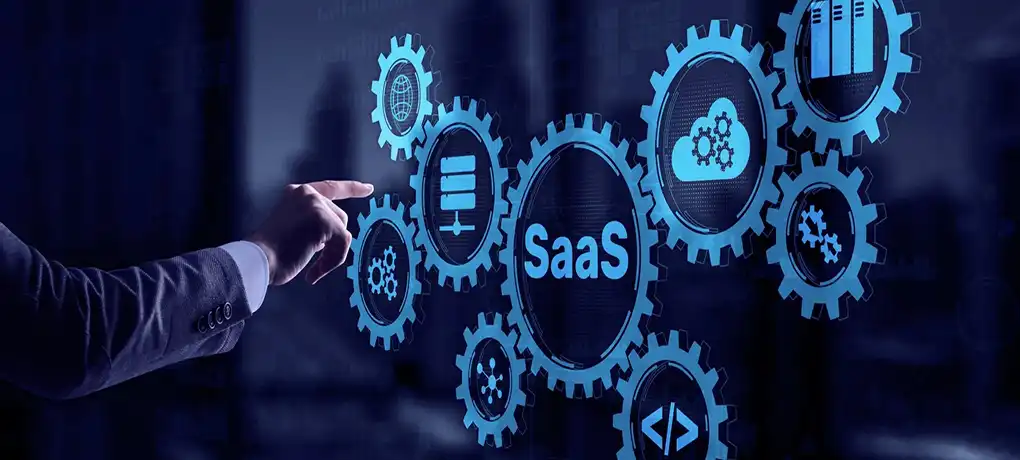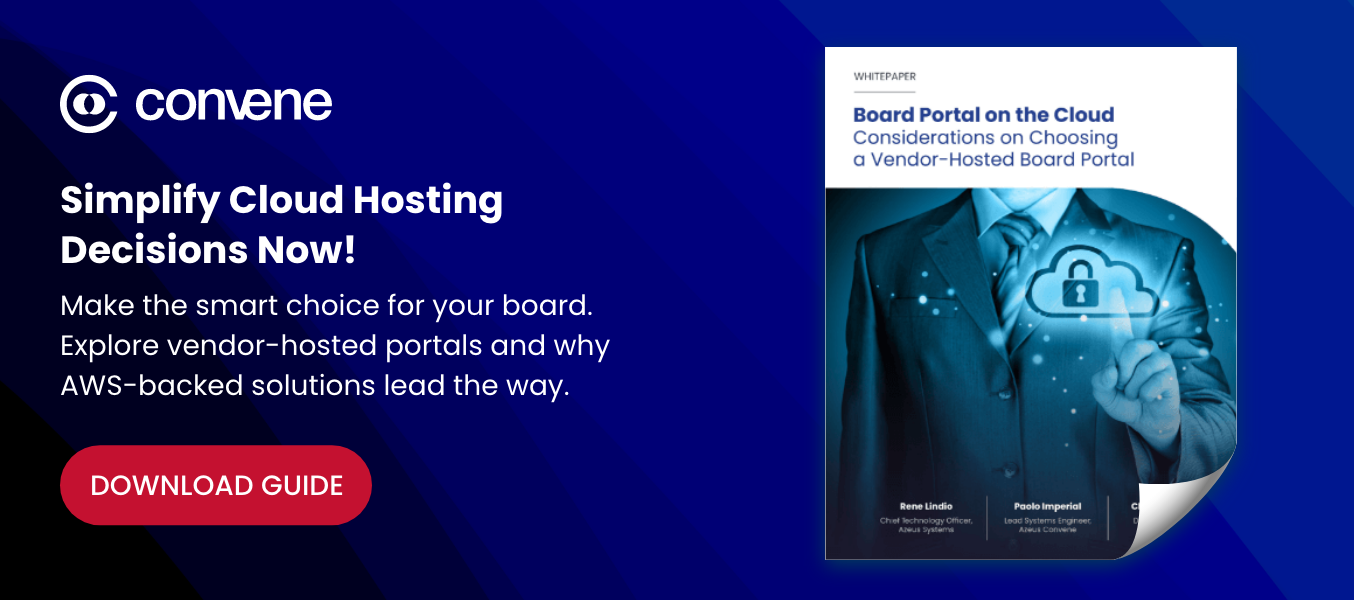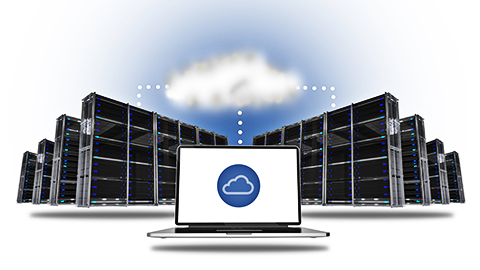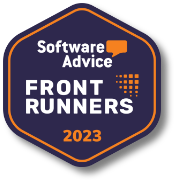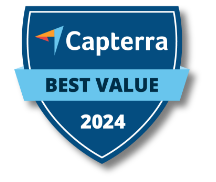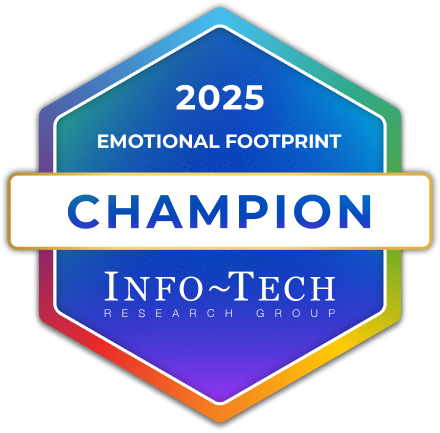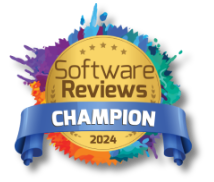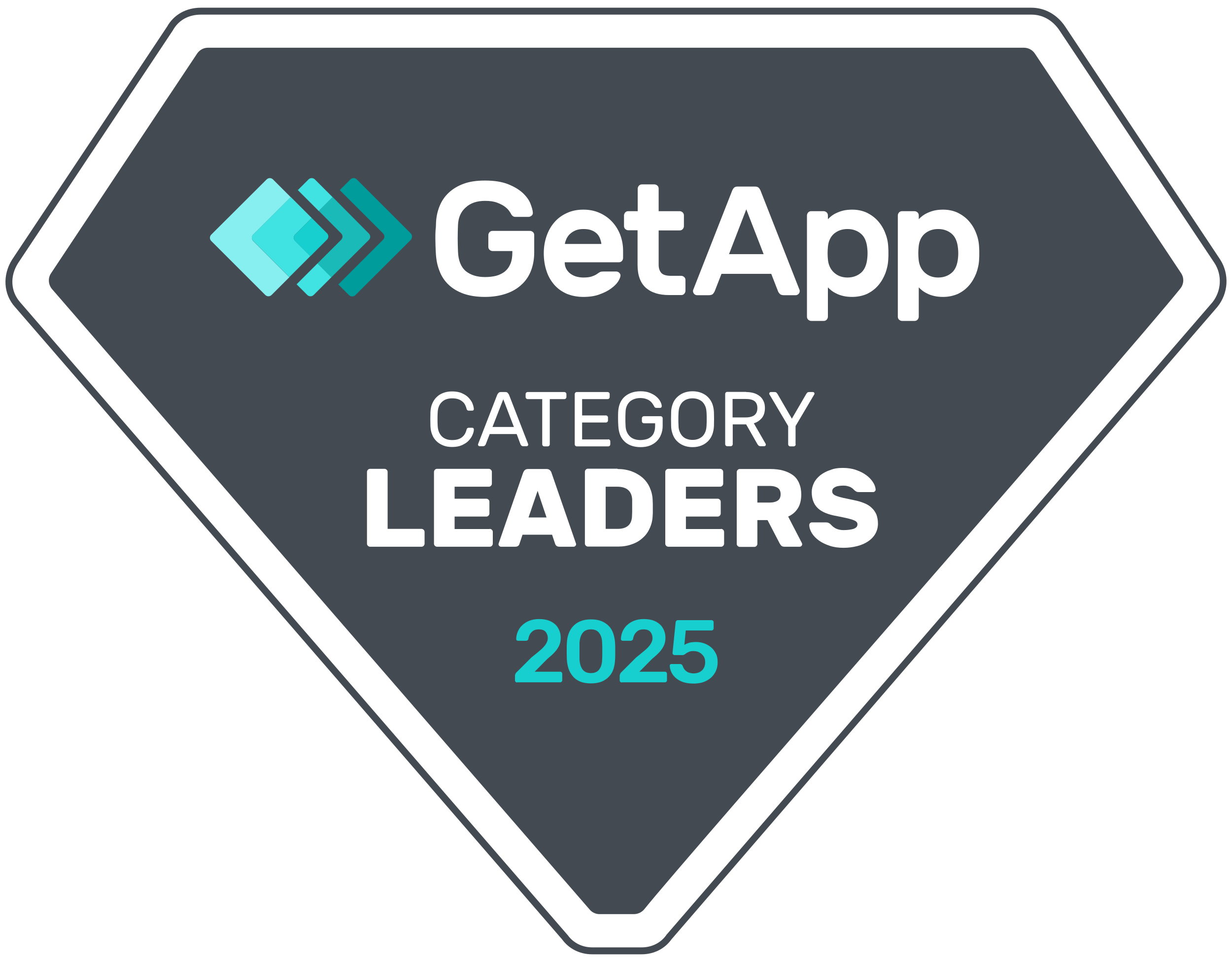Many of today’s most successful organizations are powered by cloud-based solutions that support agile decision-making and scalable growth—two of the most important elements of long term business success. These platforms enable seamless workflows across teams and locations, transforming processes that once relied on bulky software into tasks that can be done online with just a few clicks. Just think of how platforms like Google Workspace have simplified document collaboration, or how tools like Zoom and Slack have redefined the way we communicate and work together in real time.
At the core of these innovations are SaaS companies. These are organizations that offer software applications over the internet instead of traditional on-premise installations.
In this comprehensive guide, you will learn everything you need to know about SaaS companies, including the definition, types, advantages and risks, and some real-world SaaS company examples. For SaaS boards looking to streamline decision-making, find out how board portals can simplify meeting workflows for your organization.
What is a SaaS company?
SaaS stands for Software-as-a-Service and is a cloud-based app that a company offers to users on the web, meaning the software is hosted on the provider’s servers and accessed remotely. Instead of purchasing, installing, and maintaining on-premise software, SaaS companies deliver applications through a web browser or mobile app.
Single-Tenancy vs. Multi-Tenancy
SaaS platforms are typically built on either single-tenant or multi-tenant architectures. In a single-tenant setup, each customer has their own instance of the software and database. This is popular in heavily regulated industries like finance and healthcare as it offers greater data isolation and security.
On the other hand, multi-tenancy allows multiple users to share the same software instance and database. To maintain privacy, each tenant’s data is securely partitioned, making it more cost-effective and scalable for larger organizations in industries that don’t require strict compliance standards. Popular examples of global companies with multi-tenant architectures are Netflix and Hubspot.
How does a SaaS company work?
The concept of SaaS is fairly simple: users can access fully functional software applications through any device, at any time, from anywhere, as long as they pay a monthly or annual subscription fee. Instead of purchasing and installing software manually, SaaS allows businesses to develop and deploy their applications in the cloud, offering seamless scalability to match user demand and ensuring that all users receive automatic updates without disruption.
Meanwhile, the software provider or SaaS company handles everything behind the scenes, from server maintenance and security updates to data backups and technical support. That way, users can focus on what matters most: running their business.
SaaS Company vs. Traditional Software Company
While SaaS companies operate through the cloud via recurring subscription, traditional software companies typically charge a one-time license fee for on-premises installation. In this model, vendors install the software directly onto the customer’s infrastructure, either on individual computers or on the organization’s local servers. Customers are then responsible for managing their own hosting, updates, and maintenance, or may need to pay extra for ongoing support. For the longest time, this was the standard in most organizations.
This is often the reason why many companies have transitioned to SaaS. As of 2023, 73% of organizations were already using SaaS applications, with the figures continuing to climb as users seek solutions that cater to their efficiency, flexibility, and remote work demands. In the U.S. alone, at least 70% of companies have integrated at least one SaaS solution to support their operations.
SaaS Company Types
From internal operations to customer engagement, SaaS companies now support businesses in many different capacities. Here are some of the most common areas where they deliver great support and value, along with some Saas company examples:
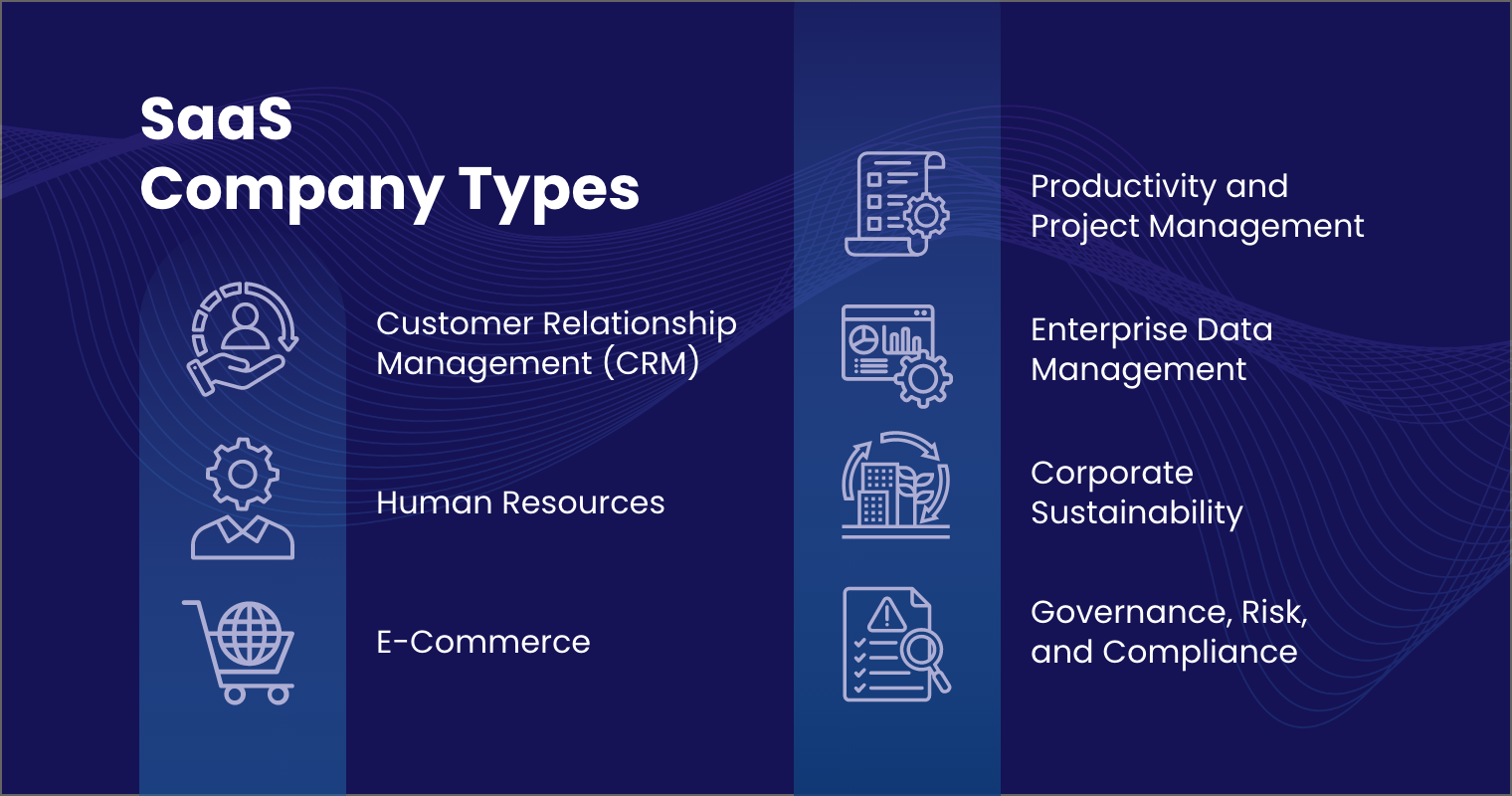
Customer Relationship Management (CRM)
In 2024, CRM solutions have secured 25% of the SaaS market’s total revenue share–the largest segment in the industry. This dominance highlights the growing importance of customer-centric strategies in shaping how modern businesses operate.
CRMs help businesses manage customer interactions across the entire lifecycle, integrating with sales and marketing to provide a unified view that improves overall customer satisfaction. One popular example is Salesforce, a leading CRM platform that transformed from a basic customer database into a robust CRM ecosystem.
Human Resources
HR SaaS platforms serve as a one-stop shop for employee data management. By storing information in a centralized database, such tools simplify everything from onboarding to processing payroll. For HR leaders, this means less manual work, faster reporting, and more time to focus on strategic initiatives.
BambooHR is one of the top-performing HR platforms in recent years. It is a user-friendly software that automates key human resource tasks, such as job posting, time-tracking, and performance management.
E-Commerce
SaaS e-Commerce platforms, such as Shopify, make digital retail more accessible by letting businesses build online stores, manage inventory and payments, and handle logistics, all in one digital space. Since they’re hosted by the provider, users don’t need to worry about maintenance or updates as everything is handled automatically. This is important for businesses that value time, customer security, and efficiency over technicalities.
Productivity and Project Management
Tools like ClickUp and Asana help teams plan, track, and collaborate on tasks and deadlines, ensuring that nothing slips through the cracks. These platforms are part of a broader category of online productivity tools, which also include cloud-based word processors, spreadsheets, and email clients, all designed with built-in collaboration features and seamless access from anywhere.
Enterprise Data Management
Data management SaaS solutions help large organizations collect, store, and analyze vast data sets across multiple sources. These platforms provide enterprise-grade security and scalability while breaking down data silos to improve quality and drive better decisions. One example is the Amazon Web Services (AWS) Data Management Suite, which enables businesses to operate fully managed databases and attain performance at scale.
Corporate Sustainability
As stakeholders demand greater transparency, organizations are responding by investing in tools that enhance sustainability reporting. According to the 2024 Sustainability Action Report by Deloitte, 74% of companies say they are likely to invest in new technologies to improve the quality and timeliness of their ESG (environmental, social, governance) disclosures.
ESG solutions like Convene ESG support this shift by making it easier for organizations to measure, manage, and communicate their sustainability performance. These platforms automate data collection, offer standardized reporting frameworks, and help companies meet regulatory requirements while identifying areas for improvement.
Governance, Risk, and Compliance
Technologies evolve faster than many organizations can keep up, often leaving them lagging on governance, risk management, and compliance. GRC solutions, including LogicGate and AuditBoard, bridge this gap by helping organizations adapt quickly to regulatory changes and internal risk exposures. These platforms are particularly valuable for organizations in regulated industries, as they centralize compliance monitoring, automate risk processes, and provide audit trails to maintain operational integrity.
Benefits of Partnering with SaaS Companies
The SaaS market is experiencing rapid growth. A recent study by Precedence Research found that as of 2025, the global SaaS market has ballooned to USD 404.21 billion and is projected to more than triple, reaching approximately USD 1,251.35 billion by 2034. This surge is driven by the growing demand for integrated tools and, most notably, the increased adoption of public and hybrid cloud environments.
As it happens, the advantages of partnering with SaaS providers become even more evident. Below are just some of them:
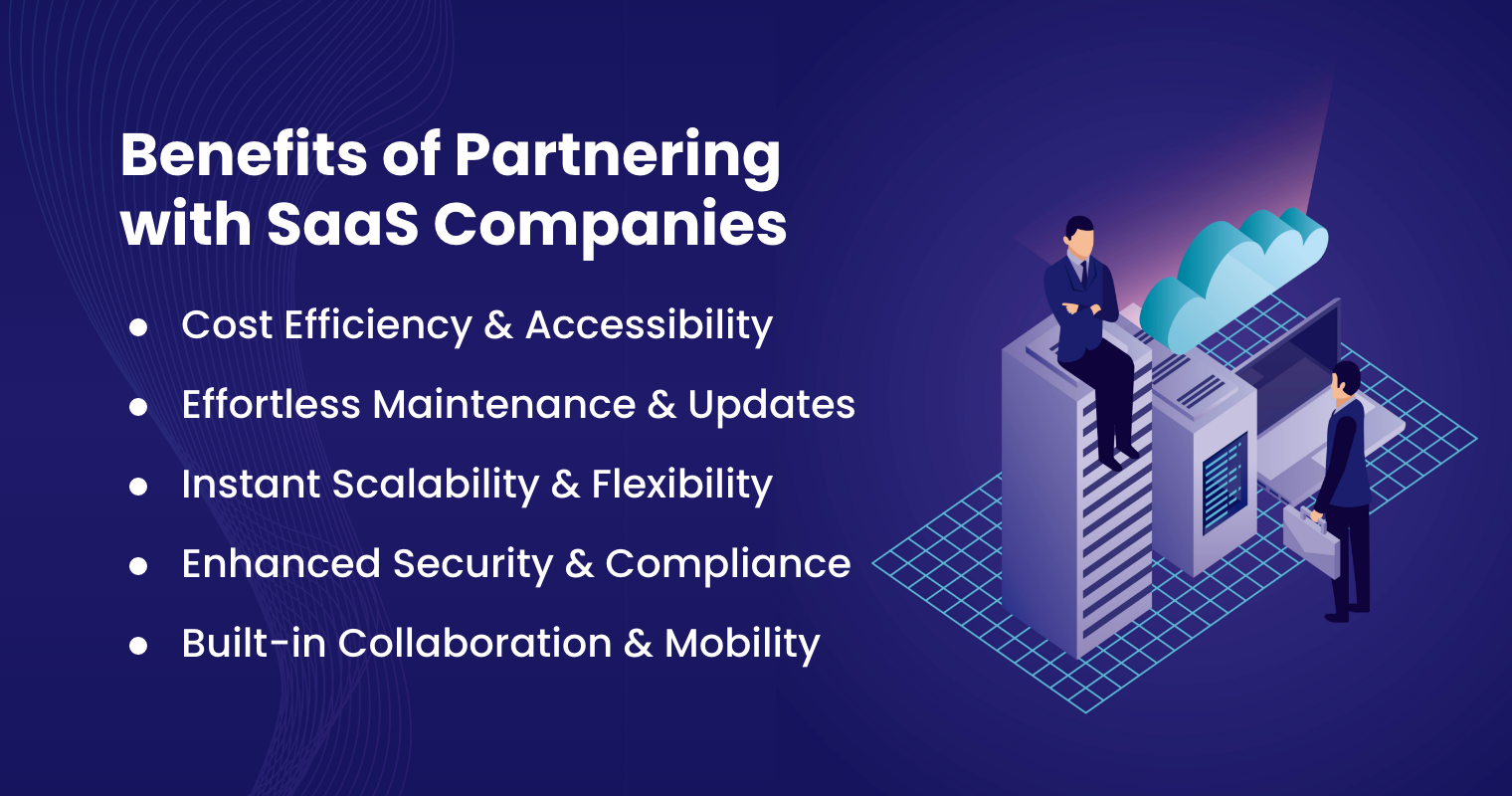
Cost Efficiency & Accessibility
SaaS eliminates hefty upfront costs in licenses and IT infrastructure, replacing them with predictable monthly subscriptions that scale with your usage. This low barrier to entry makes enterprise-grade software accessible to companies of all sizes, especially startups that may need to stay lean while still accessing powerful tools to compete.
Effortless Maintenance & Updates
SaaS providers handle all the technical heavy lifting, including software maintenance, security patches, and feature updates that happen automatically in the background. As such, you’ll always have access to the latest capabilities without downtime or additional effort from your IT team.
Instant Scalability & Flexibility
Need to add fifty users during peak season or expand into new markets? SaaS platforms can accommodate these changes instantly without requiring new hardware or software installations. This agility is invaluable for growing businesses and those operating in dynamic environments.
Enhanced Security & Compliance
Leading SaaS providers invest heavily in cybersecurity infrastructure and maintain compliance with industry standards, often exceeding what most organizations can achieve independently. This professional-grade security is especially valuable for smaller companies with limited IT budgets.
Built-in Collaboration & Mobility
SaaS applications are designed for today’s distributed workforce, enabling real-time collaboration and access without geographic barriers.
Risks of Partnering with SaaS Companies
But while SaaS offers compelling advantages, business leaders must also understand and plan for potential risks associated with using cloud-based software solutions, such as:
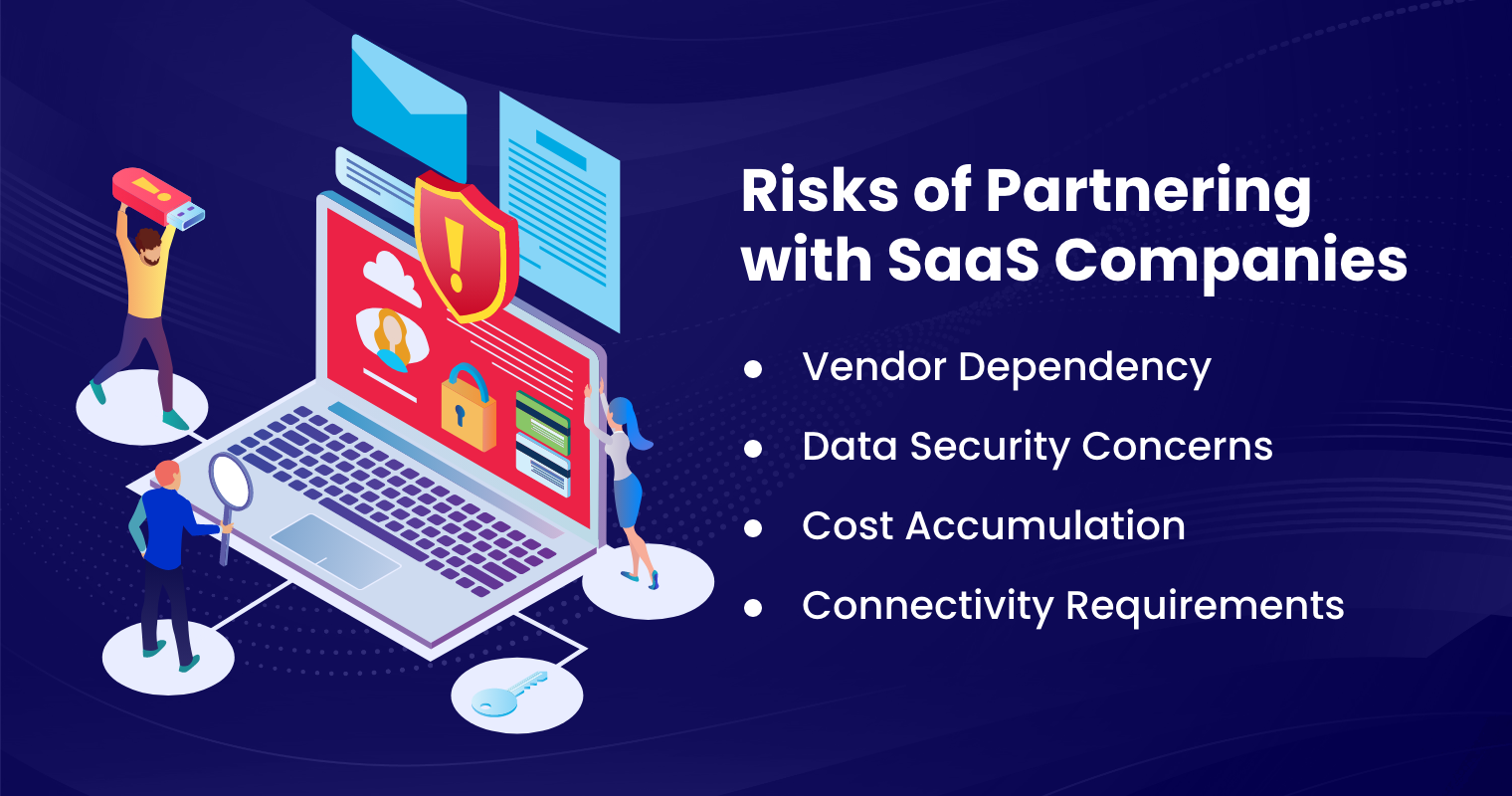
Vendor Dependency
The downside to relying on cloud-based tools is that your business becomes reliant on a third-party provider for critical functions. If they experience downtime, go out of business, or discontinue service, it can significantly disrupt operations and force costly data migrations.
Data Security Concerns
Entrusting sensitive data to third-party providers requires careful evaluation of their security measures. While leading providers often maintain strong standards, you share responsibility for security, especially when allowing remote access from various devices.
Cost Accumulation
Subscription fees add up over time and can become expensive at scale. Without careful monitoring, these ongoing costs may surpass the expenses of traditional on-premise solutions over time.
Connectivity Requirements
Since SaaS tools run in the cloud, they generally depend on reliable internet connections. Organizations with poor connectivity or those needing robust offline capabilities may struggle with performance issues during outages.
Elevate SaaS Management and Governance with Convene
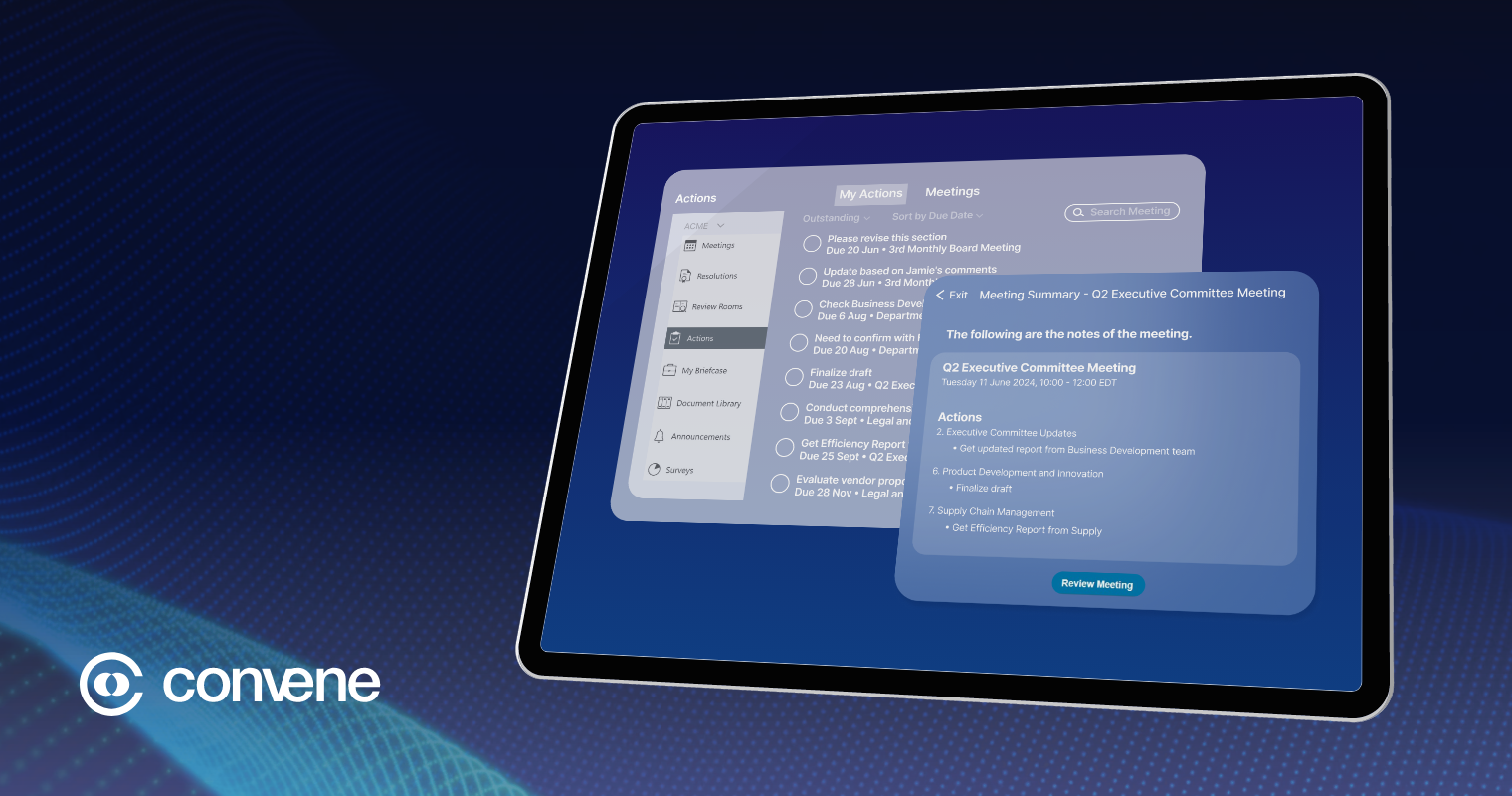
SaaS-powered companies thrive on efficiency, innovation, and rapid scalability. But as they scale, it also entails more moving parts and harder decisions for the board. To maintain momentum and make informed decisions at the highest level, they need a secure, reliable platform for managing board documents and discussions. Convene offers exactly that.
As one of the leading board management solutions, Convene simplifies governance without slowing innovation. During meetings, it enables easier agenda building, real-time annotations, and meeting minutes generation, while keeping sensitive documents secure and organized. It also offers dedicated Review Rooms for boards to review and approve critical documents.
Moreover, Convene is built with enterprise-grade security, including AES 256-bit encryption, role-based access, multi-factor authentication, and ISO 27001/27017/27018 certifications. These features ensure data stays safe, compliant, and auditable.
And it doesn’t stop there.
To further support modern governance and foster a true sense of innovation, Convene now includes powerful AI features built directly into its platform. Recently released, Convene AI’s new features include:
- Automated meeting minutes that help summarize discussions, flag key action items, and format everything into editable minutes.
- Action suggestions and creation of follow-up tasks.
- AI assistance, which allows board members to search and ask meeting materials for quick answers.
Powered by AWS Bedrock, these AI capabilities are housed within a secure environment that ensures enterprise-grade data privacy and protection.
Curious to see it in action? Book a demo today and find out how your SaaS-driven board can run more efficiently, securely, and intelligently with Convene.
Jess is a Content Marketing Writer at Convene who commits herself to creating relevant, easy-to-digest, and SEO-friendly content. Before writing articles on governance and board management, she worked as a creative copywriter for a paint company, where she developed a keen eye for detail and a passion for making complex information accessible and enjoyable for readers. In her free time, she’s absorbed in the most random things. Her recent obsession is watching gardening videos for hours and dreaming of someday having her own kitchen garden.

